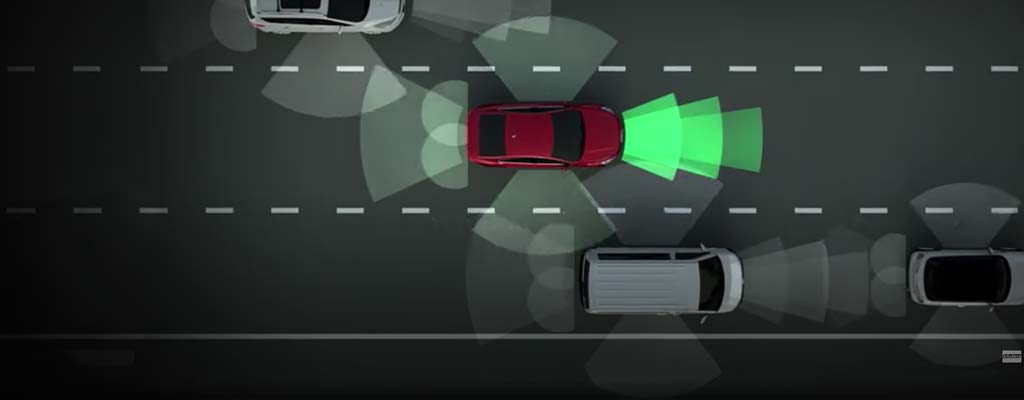What Are Advanced Driver Assistance Systems (ADAS)?
Advanced Driver Assistance Systems (ADAS), more commonly known as advanced safety systems can be found in many of today’s new vehicles. Including front-facing cameras that apply emergency braking when necessary, there’s a good chance your vehicle already has some of these safety-minded features. Let’s take a look at these safety systems, how they work, and how to ensure they function properly when you need them most.
Defining Advanced Safety Systems
Over the last decade, more automakers have added advanced safety systems to their vehicles. Some of the most common and family-friendly options are lane departure warning and lane-keeping assistance, automated emergency braking and collision warning, and adaptive cruise control. Other options include pedestrian detection and avoidance, traffic sign recognition, and blind-spot detection.
Lane Departure Warning and Lane-Keeping Assistance Help keep your vehicle in your lane.
Automated Emergency Braking and Collision Warning
Are designed to avoid accidents
from multiple angles.
Adaptive Cruise Control
Aids in maintaining a safe distance
between you and the vehicle ahead.
If your vehicle has a front-facing camera, or sensors on the side mirrors or rear bumper, there’s a good chance your car or truck already has some of these features.
How Does ADAS Work?
Advanced safety systems help you stay safe on the road. Using a system of sensors and cameras, along with state-of-the-art computers and specific software, these options can alert you to a nearby vehicle or obstacle, stop the vehicle when needed, move the car or truck back into its lane, and continually monitor surrounding areas.
These systems often use one of four types of sensors to monitor the area around your vehicle.
- Ultrasound is used for parking assistance.
- Cameras are often used for adaptive cruise control, lane departure warnings, emergency braking, collision avoidance, and pedestrian detection, as well as traffic sign recognition and views from all sides of the vehicle.
- Lidar may be used for emergency braking, collision avoidance, and pedestrian detection in the future.
- Radar may be used for blind spot detection, rear collision warning, and cross-traffic alerts. Long-range Radar is often used with adaptive cruise control.
These systems are there to help make driving easier. Using Radar as well as Lidar and global positioning satellites, it’s possible to know exactly where your vehicle is in relation to other nearby objects, the speed you are traveling, and when to take action to avoid an accident. These innovations could someday lead to fully self-driving vehicles.
Why Is ADAS Important?
AAA has found that advanced safety systems have already improved driver safety in the U.S., including lowering accident fatalities. Of the 38,824 deaths related to traffic accidents in 2020, 94% of those were caused by human error, according to the National Highway Traffic Safety Administration (NHTSA). The number of deaths due to traffic accidents is expected to drop as more automakers begin adding ADAS safety features as standard equipment.
Schedule your free Pre-Trip Safety Check at Les Schwab.
Advanced Driver Assistance Systems Applications
Some of the more common advanced safety systems include adaptive cruise control, lane departure warnings and assistance, as well as emergency braking.
Adaptive Cruise Control
Maintains a safe distance between you and the vehicle ahead.
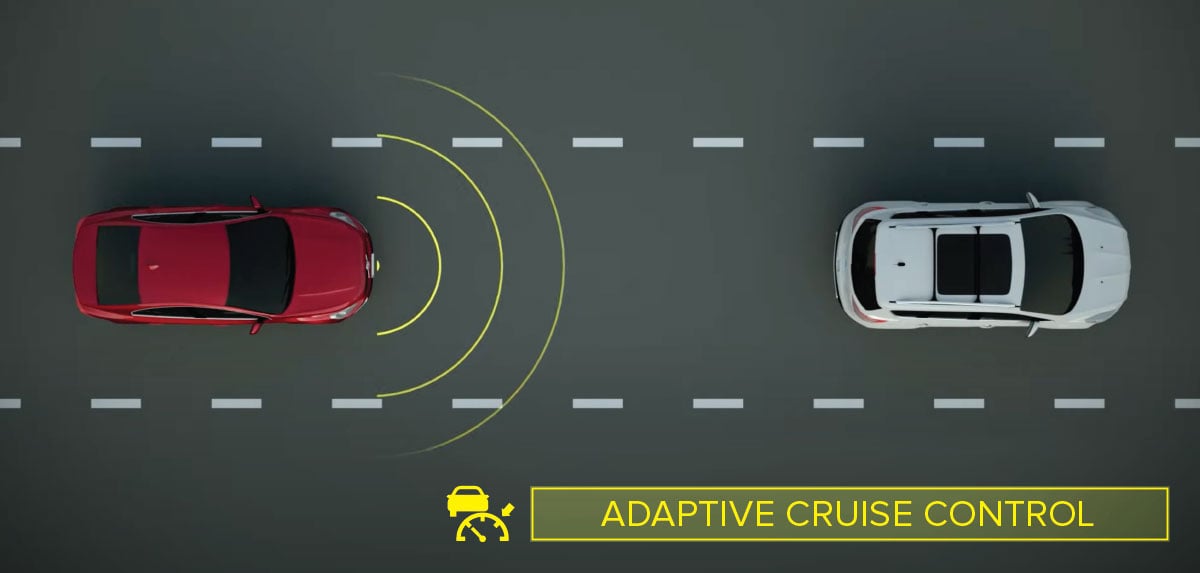
Lane Departure Warning and Assistance
Keeps your vehicle in your lane.
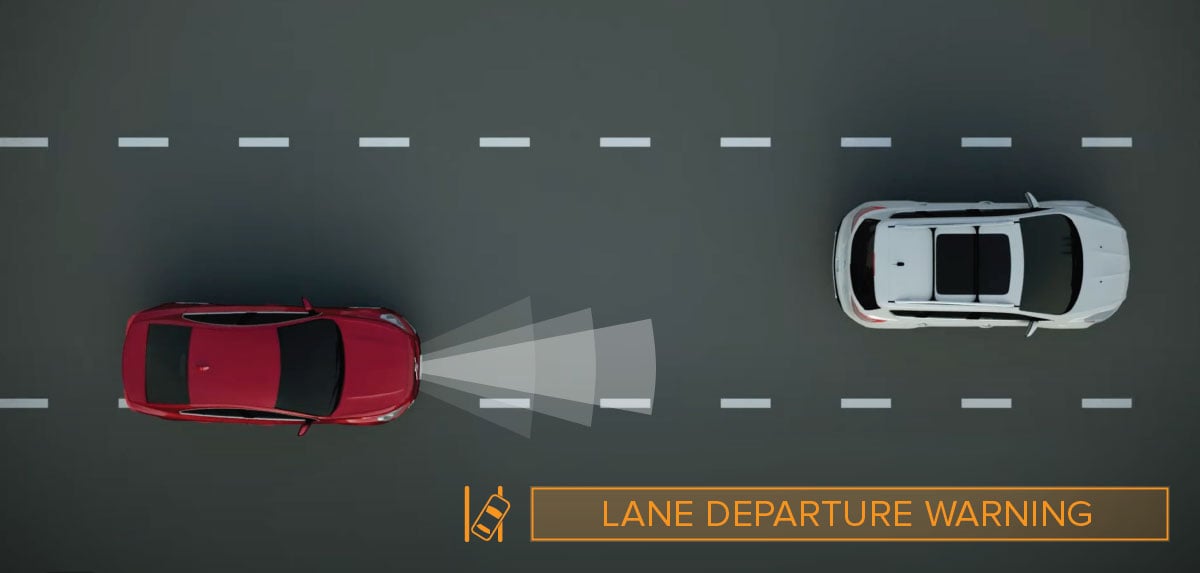
Automatic Emergency Braking
Helps avoid accidents from many angles.
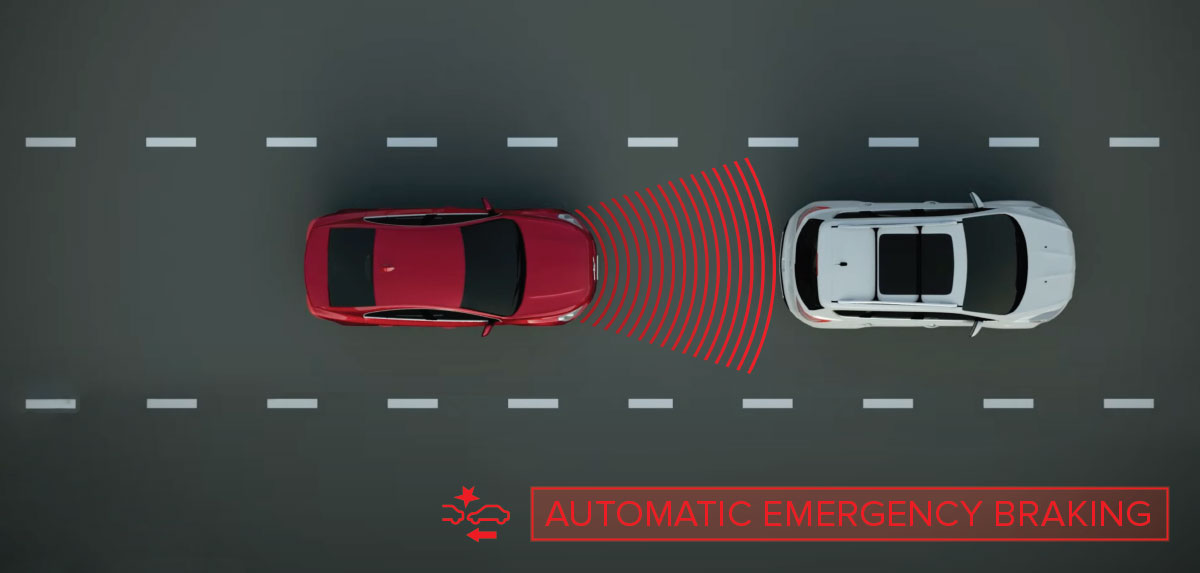
Other safety systems include:
- Anti-lock Brake Systems (ABS)
- Cruise control
- Tire Pressure Monitoring Systems (TPMS)
- In-vehicle GPS and Navigation
- Forward collision warning
- Backup cameras
- Electronic stability control
- Blind spot monitors
- Automatic parking
ADAS Makes Driving Easier
There was a time before intermittent wipers and power steering when driving was a lot more difficult. Over the years, plenty of innovations have made driving easier and safer. These include ADAS. While they might be optional right now, over time these systems will likely be standard equipment either through consumer demand or government legislation. And there is a good chance you won’t want to go driving without them.
Are ADAS Features Expensive?
Safety features have always added to the cost of new vehicles. But those costs are often happily paid when it comes to family safety — especially when you’re traveling at top speed down a busy highway.
Aside from the initial cost of some of today’s technology packages and safety features, the cost of repairing and maintaining advanced safety systems can add to the overall cost of your vehicle. That can include calibration after a wheel/tire alignment or auto accident and other repairs. But as the NHTSA reported, the chances of getting into an accident in the first place will be greatly reduced as more drivers choose these features.
What ADAS Features Should I Look For?
When given the option, carefully consider features such as emergency braking, collision avoidance, and adaptive cruise control. The NHTSA says these features can and will continue to save lives.
Give Your Car the Attention It Deserves
ADAS or advanced safety systems rely on computers as well as other vehicle input to keep you safe on the road. Your vehicle alignment, tires and suspension can have a big impact on those systems and your overall safety.
Get your alignment, shocks, struts, steering, and suspension checked and adjusted at Les Schwab. If everything lines up and you don’t need any work, our pros will let you know. If you do need some updates, they’ll show you all your options and help you make the right choice.
Schedule An AppointmentWhat you need to know
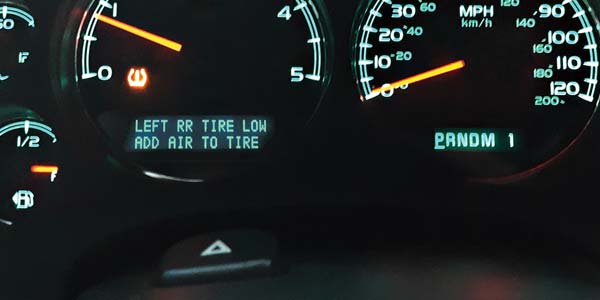
Guide to Tire Pressure Monitoring Systems
A guide to tire pressure monitoring systems, why they’re so useful, and what to do if your TPMS light is on.
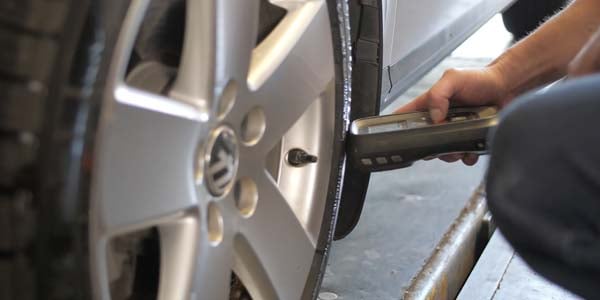
Resetting the Tire Pressure Light on Your Car
How do you reset the tire pressure light on a car? You'll find the answer in our complete guide plus find a ton more information on how to maintain your tires.

Essential Car Maintenance Before a Road Trip: Checklist & Tips
Planning an upcoming road trip? Explore car maintenance and tips that are necessary before a road trip to guarantee smooth sailing and safety on your drive.

